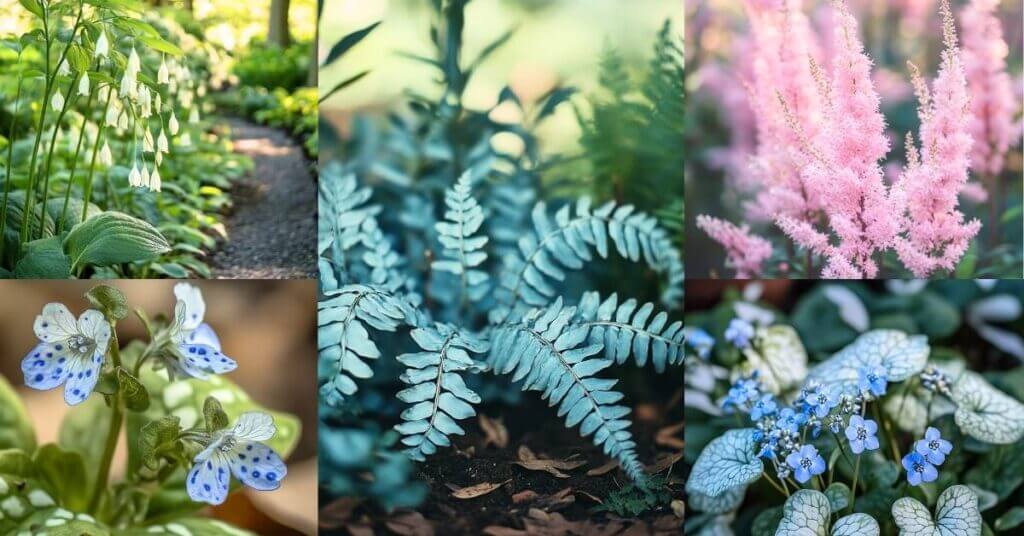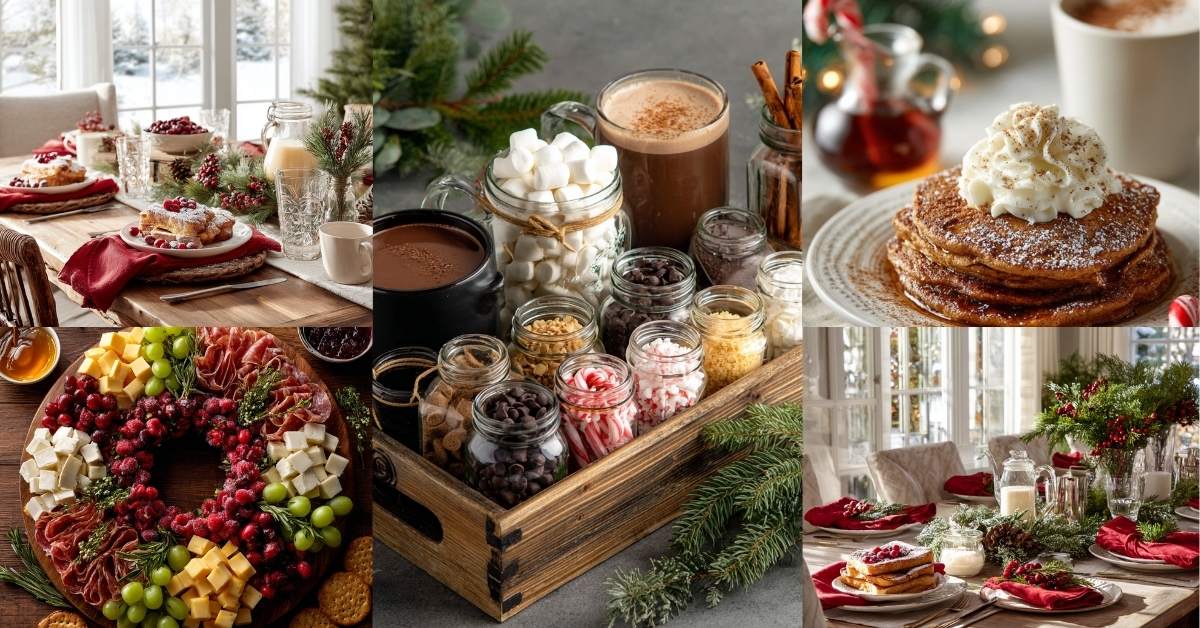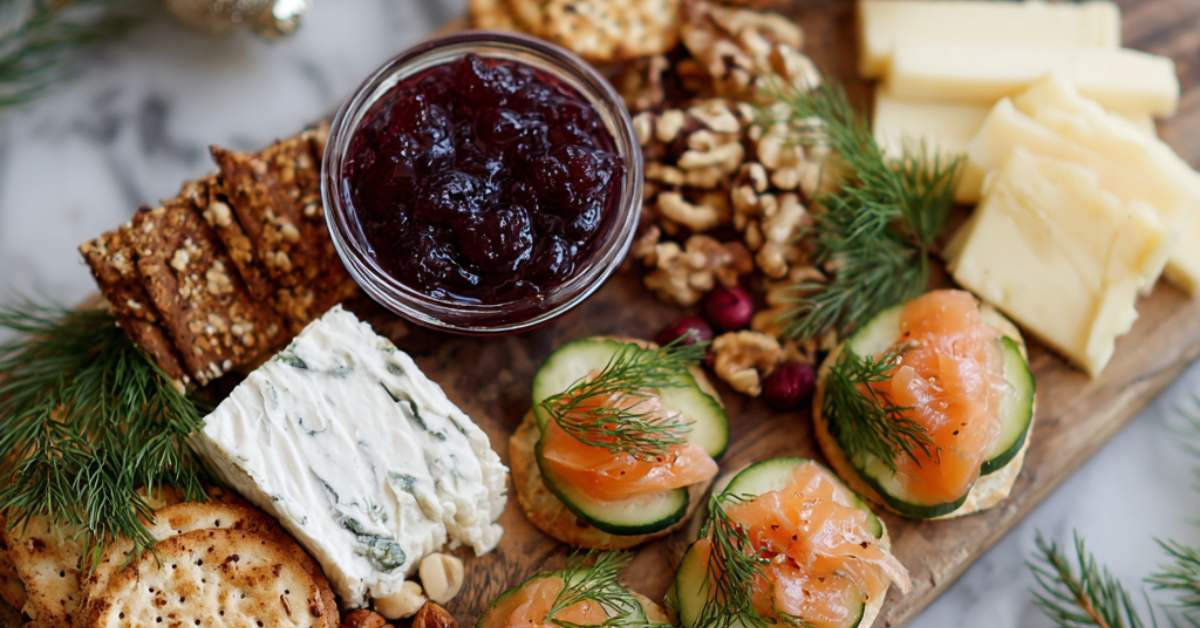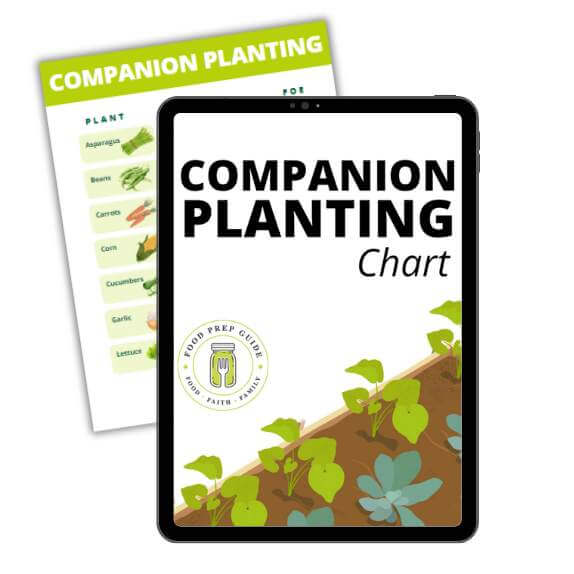You know the spots—those shadowy patches where the sun barely touches, where you’ve given up trying to grow anything spectacular.
Maybe it’s the narrow strip along your north-facing fence, or that persistent gloom under your favorite oak tree.
These areas often become afterthoughts, filled with struggling plants or left disappointingly bare.
But they don’t have to be!
The secret lies in choosing perennials that don’t just tolerate shade—they actually prefer it.
These plants thrive in low-light conditions, often producing more interesting foliage, longer-lasting blooms, and richer colors than their sun-seeking counterparts.
Here are 10 remarkable perennials that will make you grateful for every shadowy corner of your garden!
1. Hostas: The Texture Champions
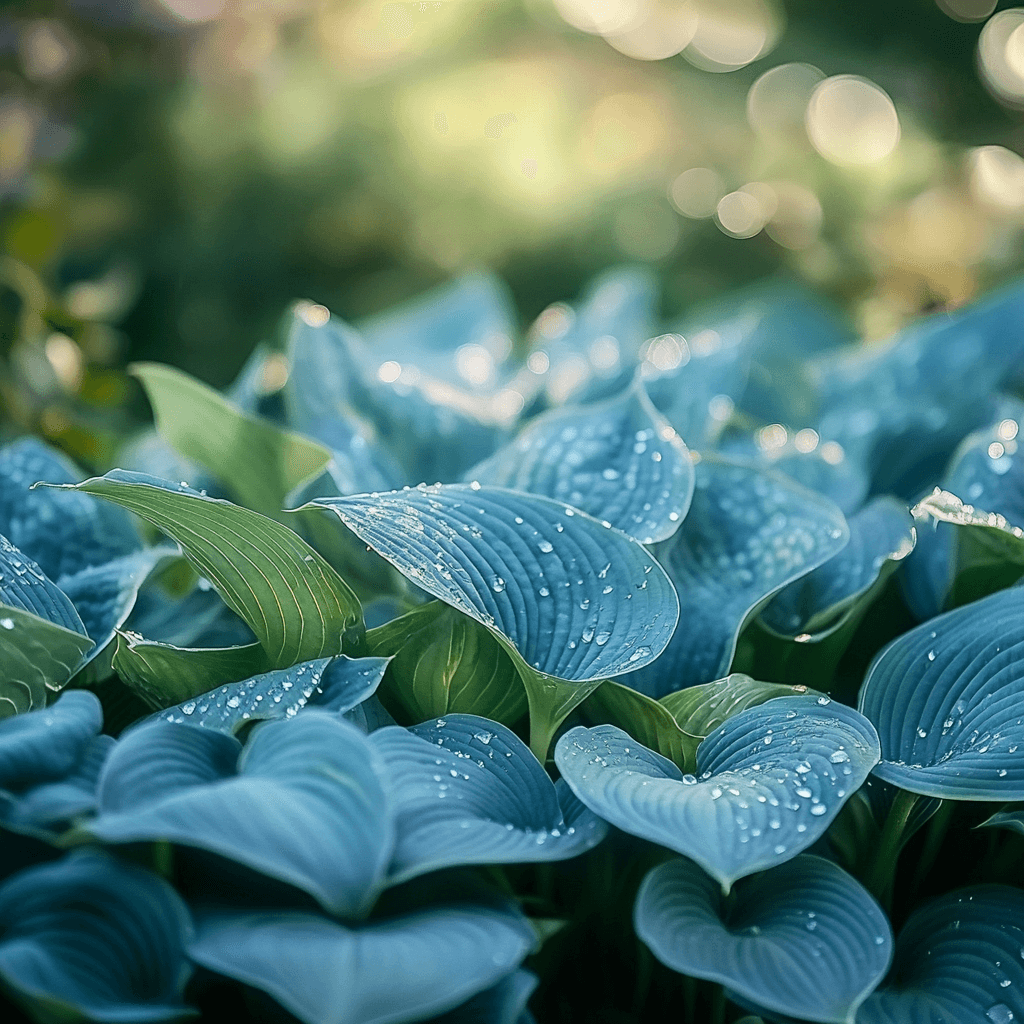
Nothing says “I’ve mastered shade gardening” quite like a mature hosta.
These foliage superstars come in sizes from tiny ‘Mouse Ears’ varieties (just 6 inches tall) to massive ‘Empress Wu’ types that can reach 4 feet high with leaves bigger than dinner plates.
What makes hostas special isn’t just their size range but their incredible diversity—blue-green, chartreuse, variegated cream and green, even types with crinkled, puckered, or wavy edges.
They’re practically texture factories for dark corners.
Growing tips: Hostas prefer rich, moist soil but can handle tough conditions once established. For the best color, plant blue varieties in deeper shade and save the yellows and golds for spots with morning sun.
2. Astilbe: Feathery Plumes in Deep Shade
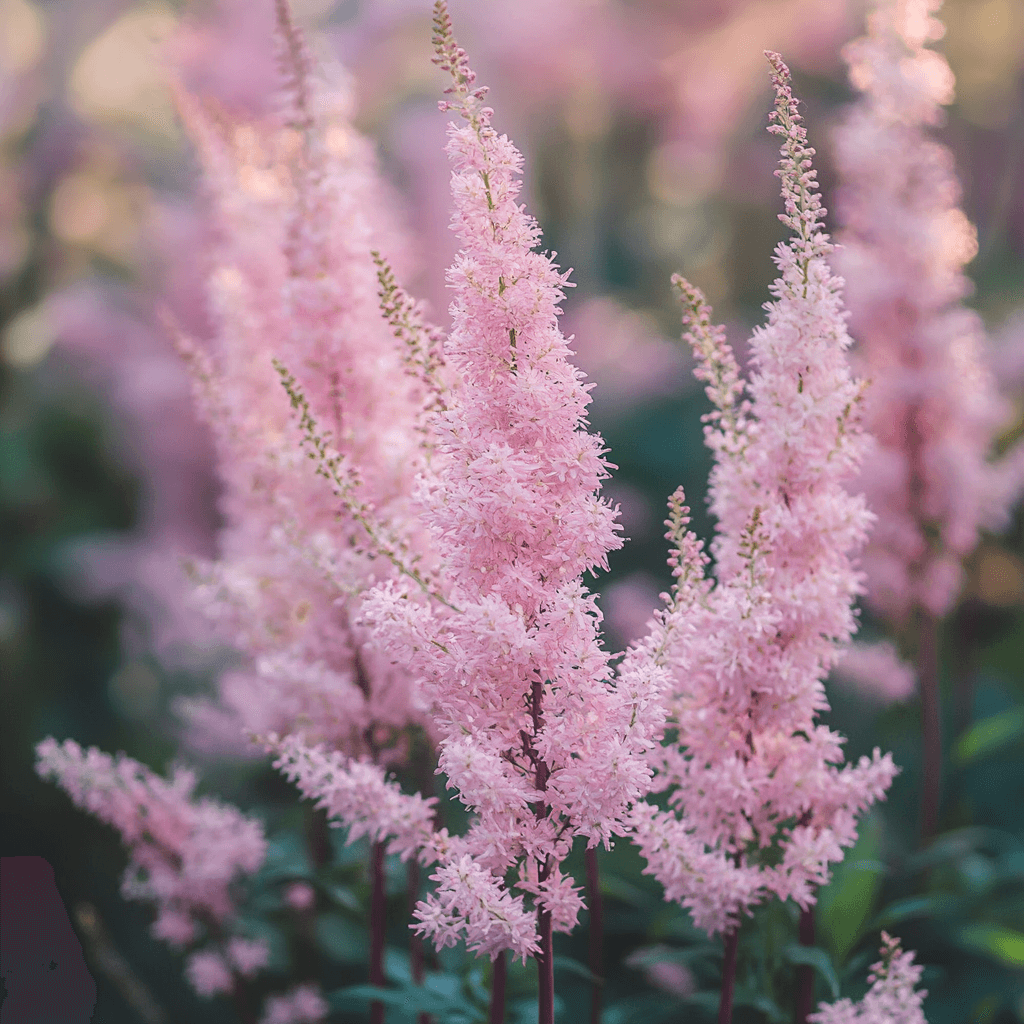
When someone claims nothing blooms in shade, show them astilbe.
These plume-like flowers rise above ferny foliage in colors from soft pink to deep red, bringing height and movement to areas that desperately need both.
What’s most striking about astilbe isn’t just its feathery blooms but how they catch even the smallest bit of light filtering through trees, creating a magical, glowing effect in deep shade.
Growing tips: These moisture-lovers hate drying out, so plant them where they’ll get consistent water. They’ll reward you with blooms from early to midsummer, depending on the variety.
3. Bleeding Heart: Nature’s Perfect Design
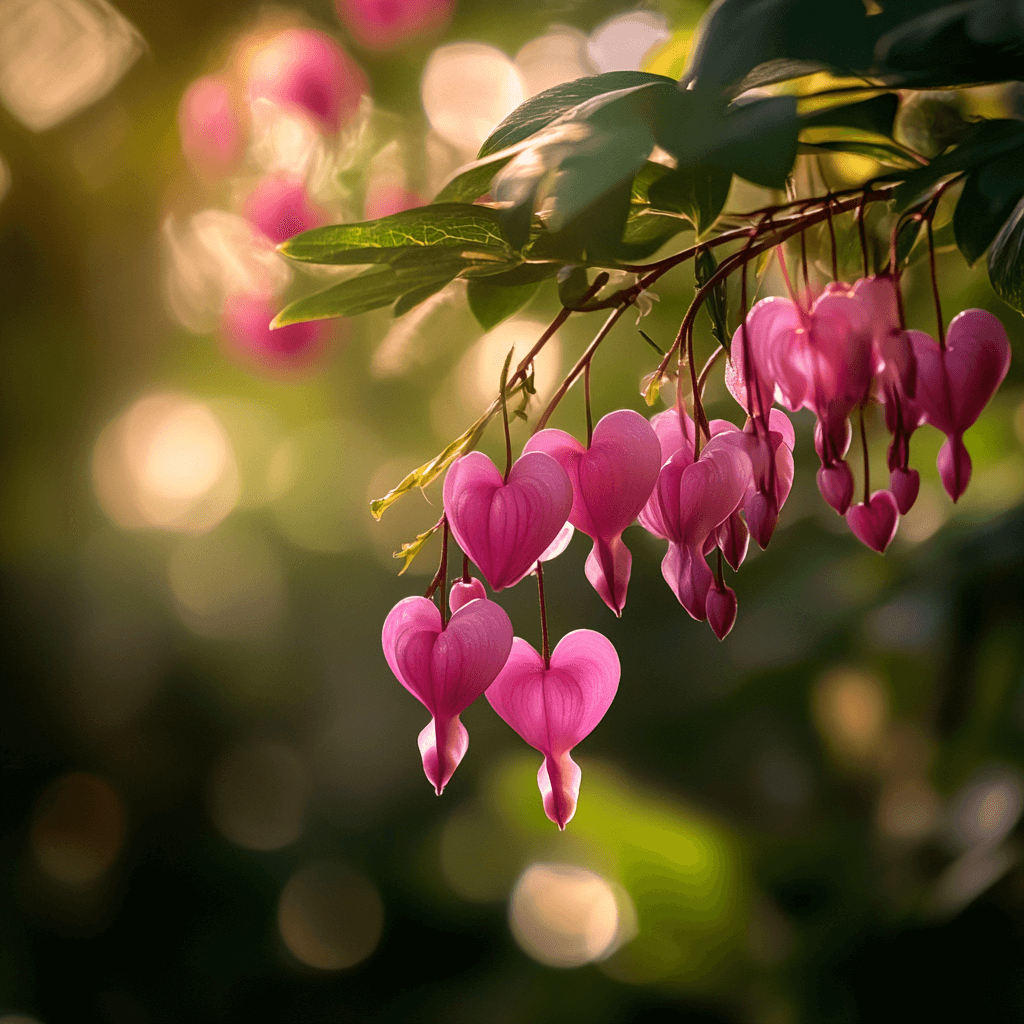
The arching stems of these heart-shaped blooms appear in spring, creating a living Valentine display that looks straight out of a fairytale.
The traditional pink-and-white varieties are classics, but don’t overlook ‘Alba’ (pure white) or ‘Gold Heart’ with its bright yellow foliage that lights up dark areas like nothing else.
Growing tips: Traditional bleeding hearts (Dicentra spectabilis) may go dormant in summer heat, so plant them with later-emerging perennials.
4. Japanese Forest Grass: The Movement Master
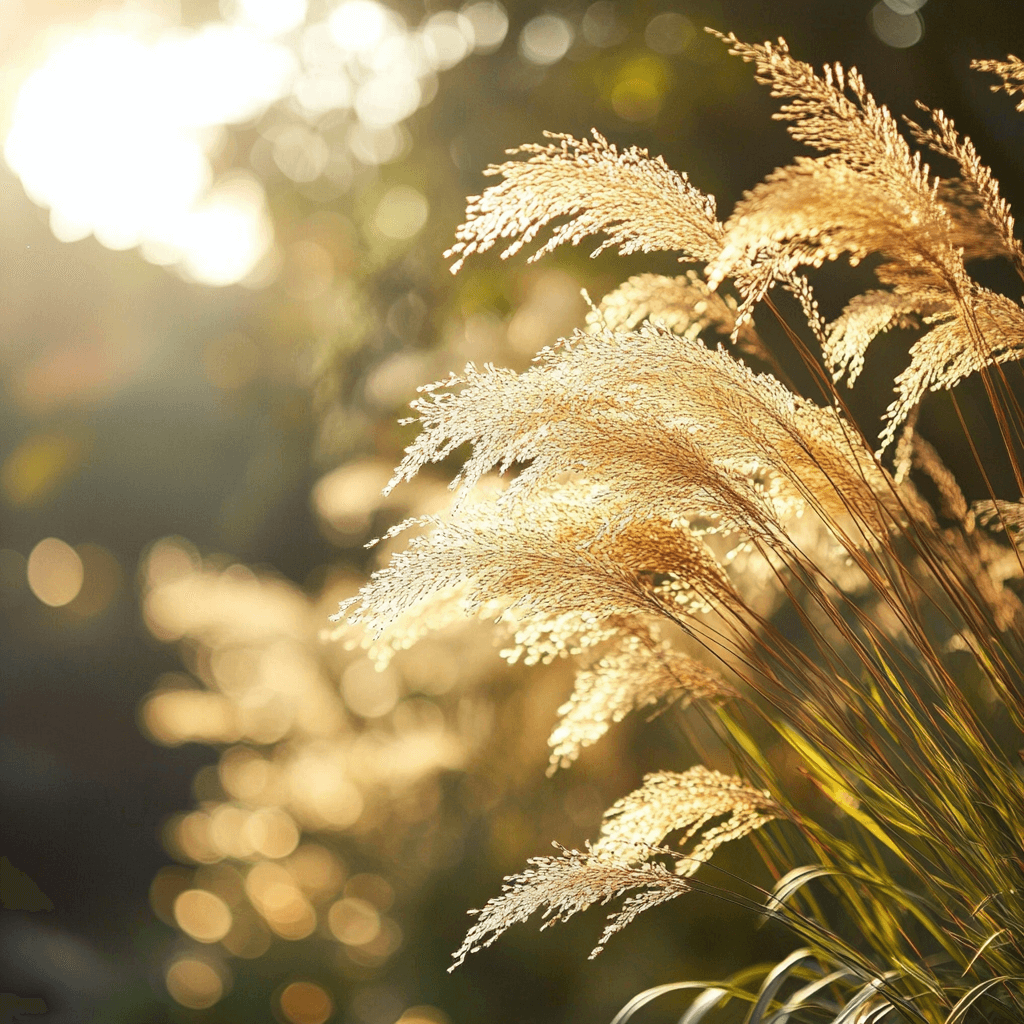
Most shade gardens lack one critical element: movement.
Enter Japanese forest grass (Hakonechloa macra), whose graceful, flowing habit brings a sense of gentle motion to even the stillest corner.
The gold-striped ‘Aureola’ variety practically glows in shade, while ‘All Gold’ creates the illusion of sunlight even in the darkest spots. Few plants can match its ability to soften edges and spill over pathways with such grace.
Growing tips: Give this grass time to establish—it’s slow to start but worth the wait. Prefers consistent moisture and protection from harsh afternoon sun.
5. Coral Bells (Heuchera): The Color Explosion
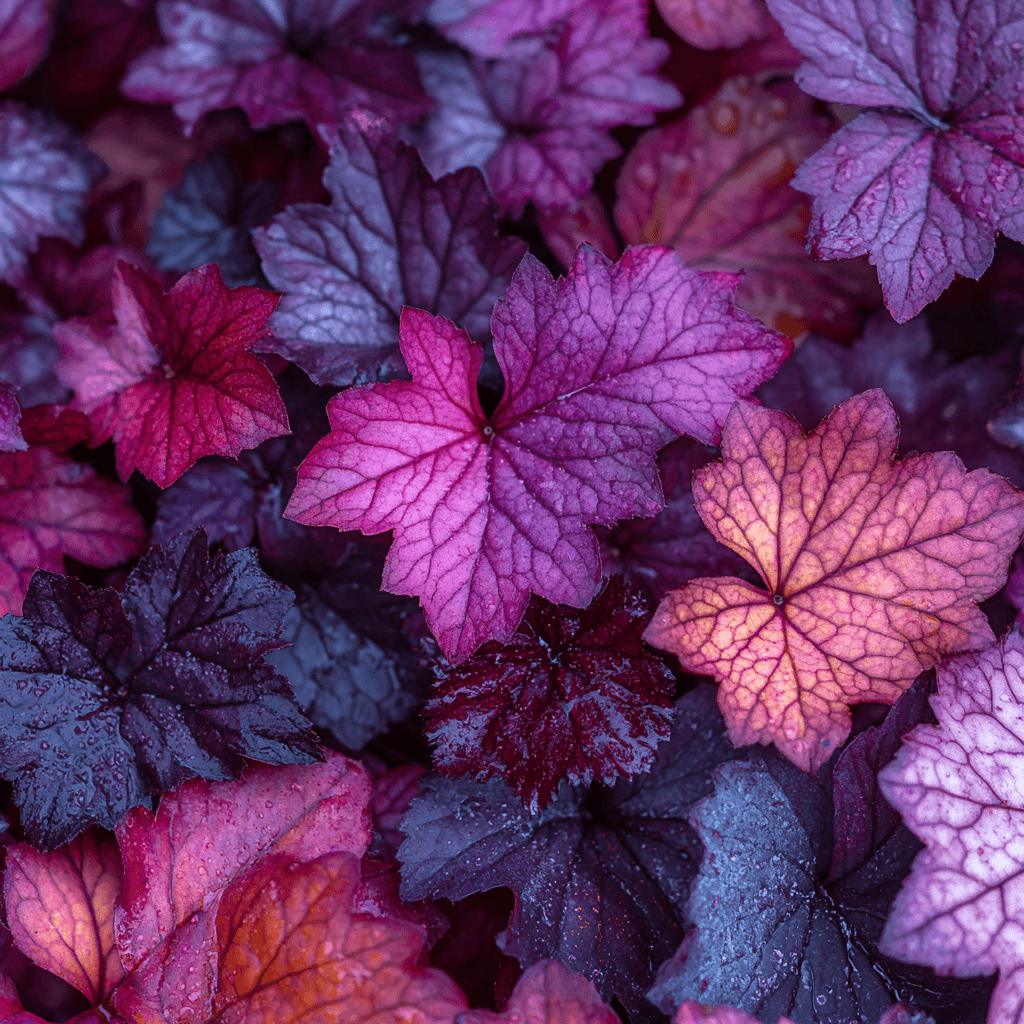
If you think shade gardens are doomed to be green-only zones, heuchera will change your mind.
These foliage stars come in colors that seem impossible: purple so dark it’s nearly black, caramel, lime green, silver, peach, and dramatic patterns that look hand-painted.
Their tidy mounds rarely exceed 12 inches tall (not counting their wispy flower stems), making them perfect front-of-border plants or container specimens.
Growing tips: Most heucheras prefer morning sun and afternoon shade. They can handle drier conditions than many shade plants but may need replacing every few years as they age.
6. Ferns: Timeless Elegance
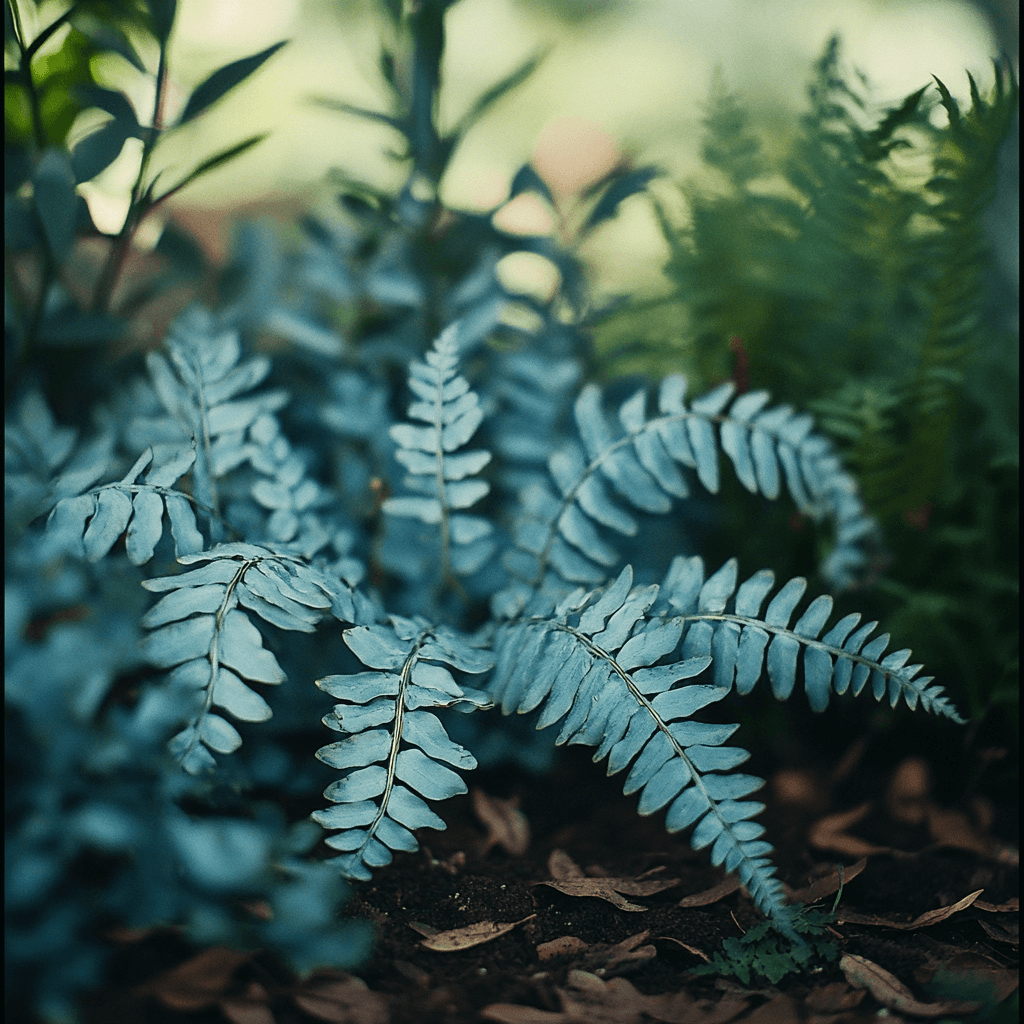
Nothing says “woodland garden” quite like ferns.
From the silvery-blue Japanese painted fern to the dramatic height of ostrich ferns, these plants bring a sense of primeval beauty to modern gardens.
Their varied textures and forms provide interest even without flowers, and many offer surprising color—the autumn fern, for instance, emerges with copper-red new growth.
Growing tips: Most ferns prefer consistently moist, humus-rich soil. Plant them where they’re protected from wind to prevent their fronds from drying out.
7. Lungwort (Pulmonaria): Spring’s First Act
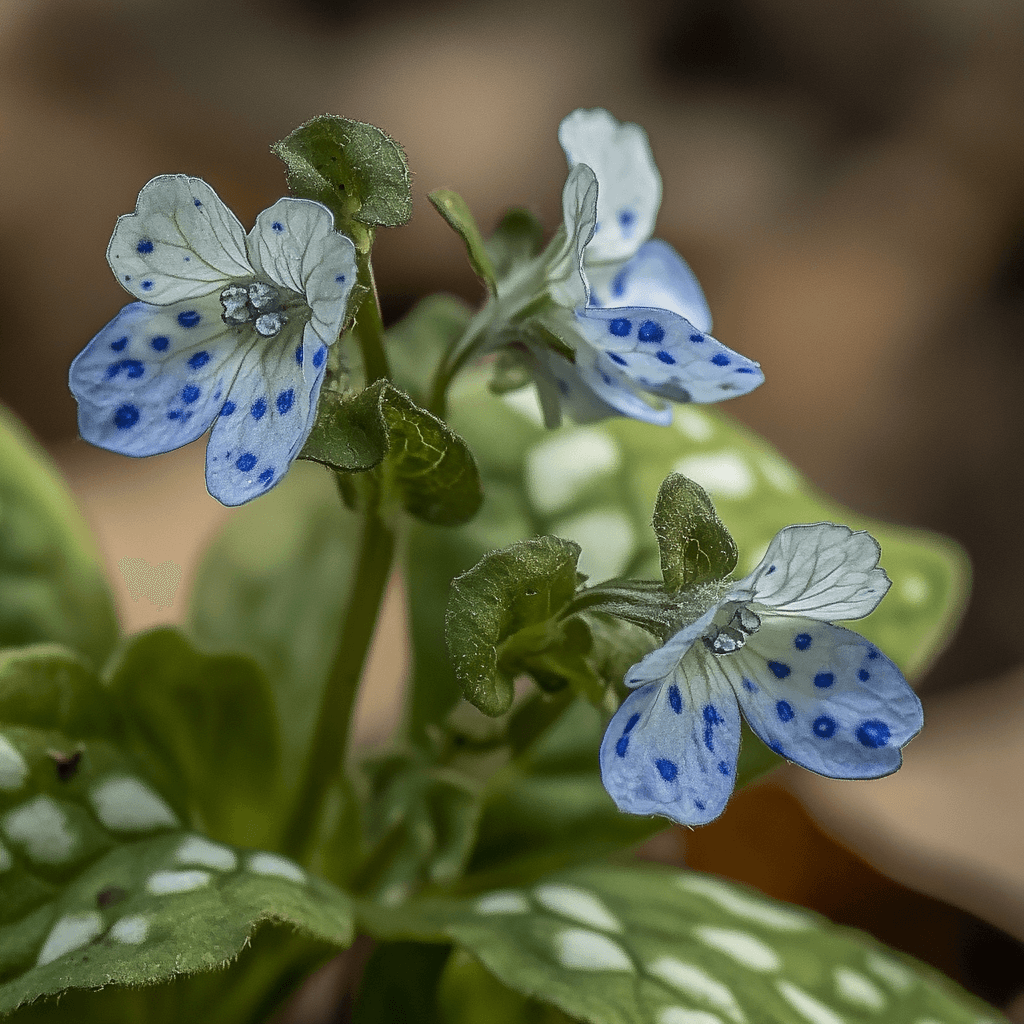
Lungwort might have an unfortunate name, but its garden performance is anything but ugly.
This early-spring bloomer offers a one-two punch of interest: spotted or silver-splashed foliage that brightens shady spots year-round, plus clusters of flowers that change from pink to blue as they age.
Few shade plants offer this much visual interest in late winter when gardens desperately need signs of life.
Growing tips: Pulmonarias prefer rich, moist soil but can handle drier conditions once established. Their fuzzy leaves may look tattered in summer heat—simply trim them back for fresh growth.
8. Brunnera: Heart-Shaped Wonder
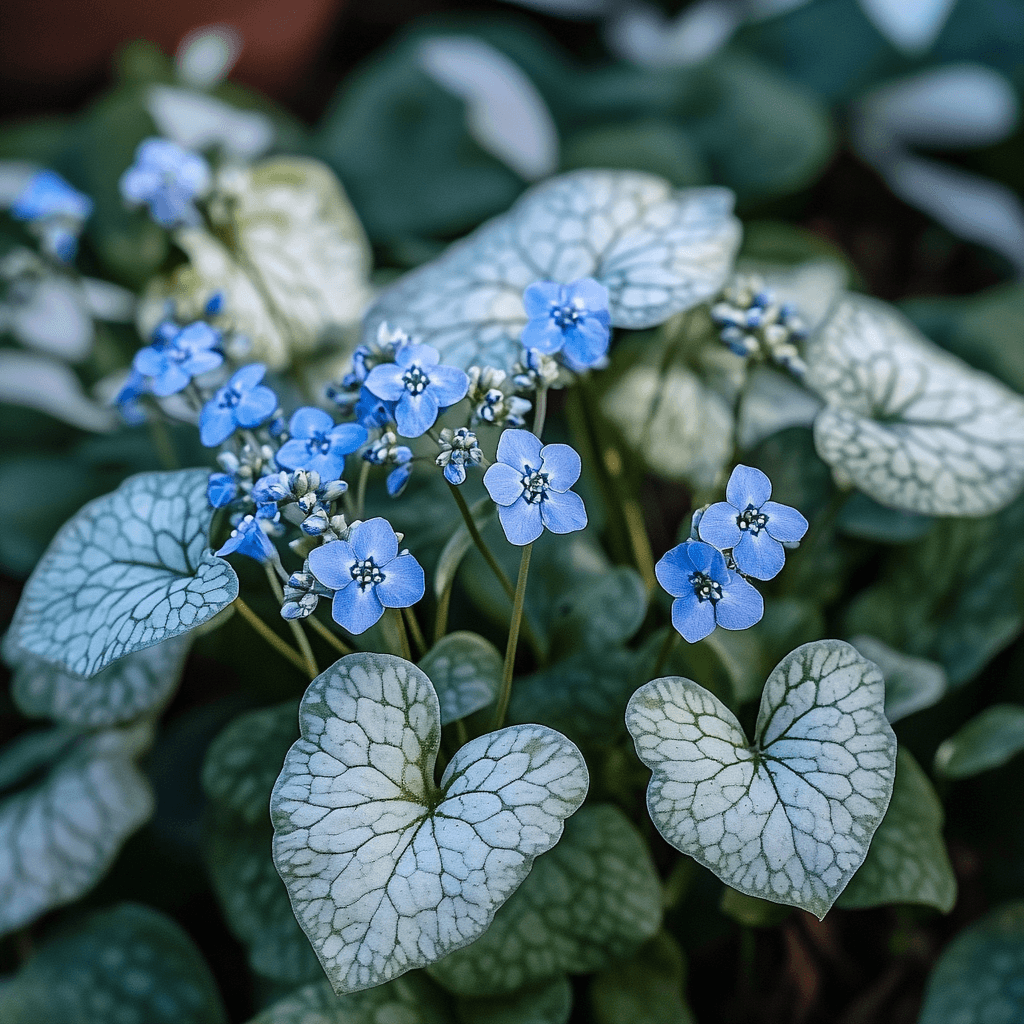
If hostas had a smaller, more refined cousin, it would be brunnera.
These woodland beauties feature heart-shaped leaves (often dramatically silver-veined or frosted) and clouds of tiny blue flowers that appear in early spring.
‘Jack Frost’ remains the gold standard with its crackled silver overlay, but newer varieties like ‘Alexander’s Great’ offer even more drama with larger leaves and stronger patterns.
Growing tips: Brunneras thrive in rich, moist soil and deep shade, though they can handle morning sun. They self-seed modestly but rarely become invasive.
9. Solomon’s Seal: Graceful Arches
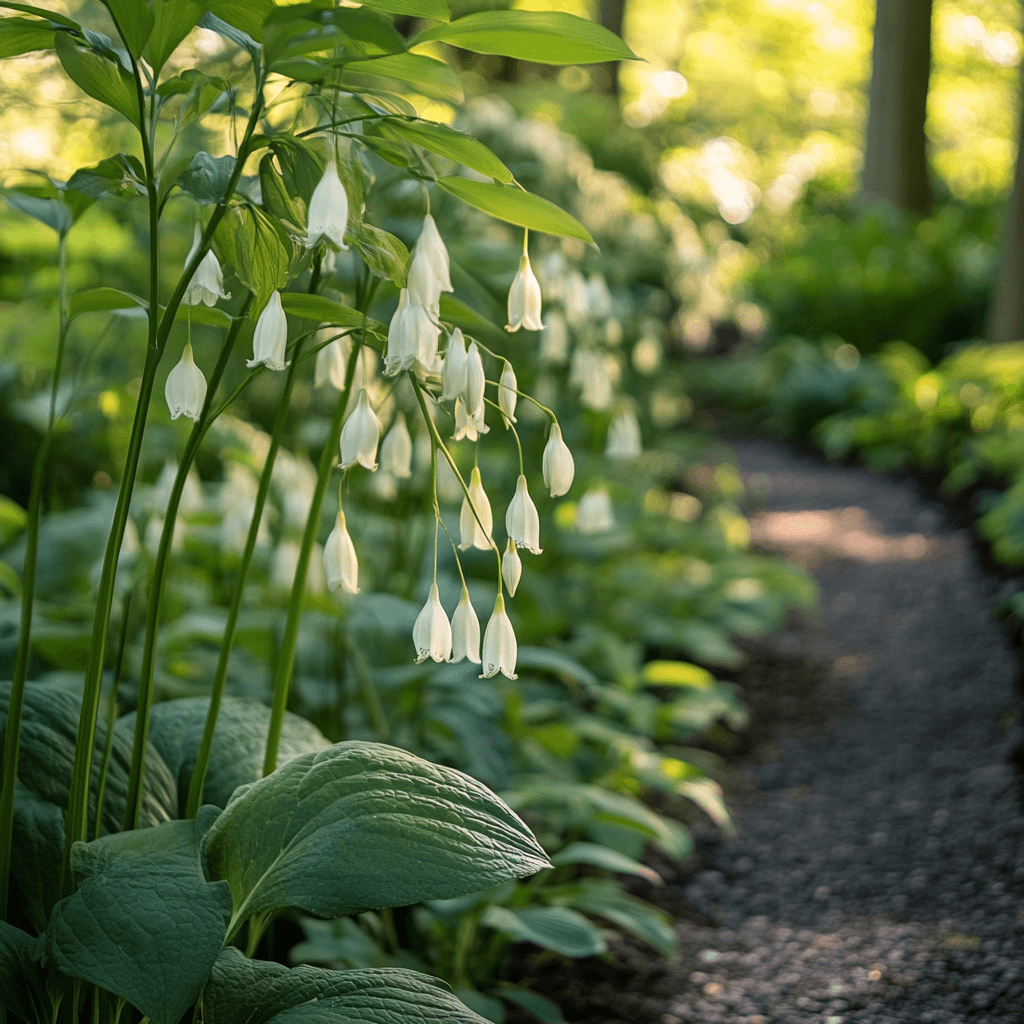
Few plants bring as much natural grace to a shade garden as Solomon’s Seal.
Its gently arching stems carry pairs of dangling white bells in spring, followed by bluish-black berries. The leaves turn a clear yellow in fall, offering three seasons of interest.
Variegated forms add extra brightness with white-edged leaves that seem to glow in deep shade.
Growing tips: Once established, Solomon’s Seal forms slowly expanding colonies that require virtually no care. It pairs beautifully with ferns and early spring bloomers.
10. Hellebores: Winter’s Gift
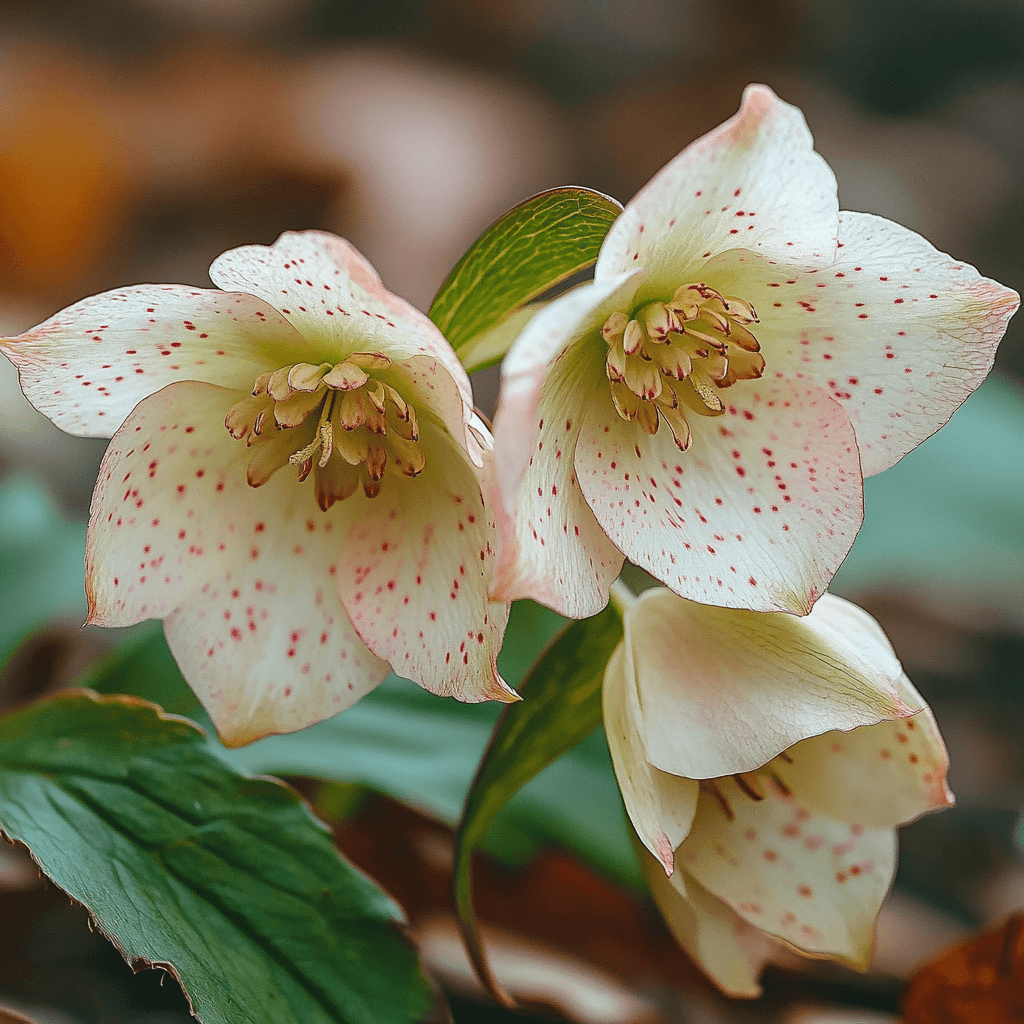
When everything else in the garden is sleeping, hellebores are just waking up.
These tough evergreen perennials produce elegant, nodding flowers from late winter through early spring, often while snow still covers the ground.
Modern breeding has created an astonishing range of colors and patterns—from pure white to nearly black, spotted, picoteed, or double forms that resemble tiny roses.
Growing tips: Plant hellebores where you can appreciate their downward-facing blooms—along paths, on slopes, or in raised beds. They thrive in partial shade and well-drained soil with plenty of organic matter.
The next time you look at that challenging shady spot, don’t see a problem—see potential. With these ten perennials, your shade garden might just become the most fascinating part of your landscape!


